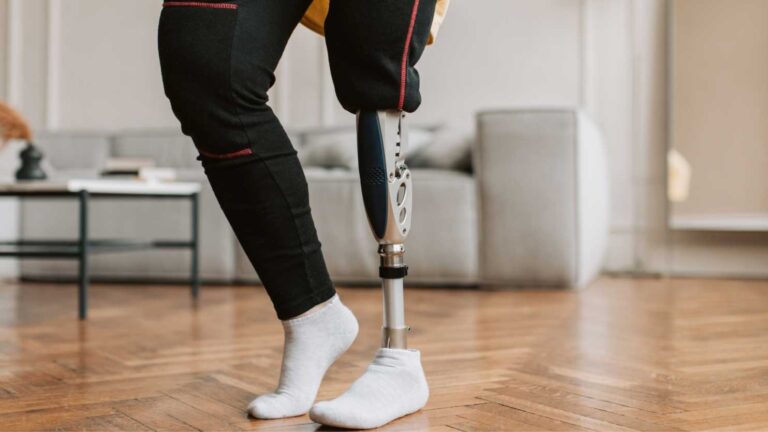Phantom pain is the experience of severe, persistent pain in a bodily part that is no longer there. Although the actual limb has been removed, the sensation still exists. Phantom pain can be a challenging symptom to manage, and it can be difficult to identify the source of your suffering.
Phantom pain can affect removed non-limb body parts, such as your :
- Eyes
- Teeth
- Nose
- Tongue
- Breasts
- Penis
Even the intestinal tract might be a part of it. Following an injury or amputation, phantom pain occurs. Continue reading to discover more about the ailment and your possibilities for therapy and avoidance.

WHAT DOES PHANTOM PAIN FEEL LIKE?
There are many different ways that phantom pain might feel. Depending on the individual, it might entail :
- Shooting or
- Stabbing pain with pins and needles
- Throbbing
- Tingling
- Cramping that feels electric shock-like in nature
WHY DOES PHANTOM PAIN OCCUR?
Phantom pain is frequently experienced almost once after limb loss, although it can also appear up to six months or even years later. Although the specific etiology of phantom pain is unknown, numerous conditions are risk factors and can make the pain worse :
- Wearing footwear without adequate arch support
- Overweight or unexpected weight increase
- Running a distance
- Running on erratic terrain
- Issues with the arches, such as flat feet and very high arches
- Achilles tendonitis
After surgery, patients with limb discomfort before amputation frequently experience phantom pains, which your doctor will work to reduce before you leave the hospital.
HOW PHANTOM PAIN IS CORRECTED?
A common sign of traumatic nerve damage is phantom pain. Even though the limb has been amputated, the damaged nerves still send pain signals to the brain. These uncomfortable feelings may occasionally be managed with medicine and other methods.
Medication
Opioids (painkillers) and nonsteroidal anti-inflammatory medicines are medications that could aid with phantom pain (NSAIDs). Anticonvulsants or antidepressants may also help some people.
Physical therapy
By demonstrating new ways for you to move your unaffected limbs or use other body parts, physical therapy may help you manage your phantom pain. Also, your healthcare practitioner will collaborate with you on stretching and exercise regimens that might lessen the severity of your phantom sensations.
The brace worn
Stretching your fascia as you sleep may help relieve discomfort. A specifically made brace is worn during sleep.
Supportive shoes
A future injury can also be avoided by wearing supportive footwear and padding in the shoes.

WHEN TO SEEK MEDICAL HELP
After a physical part is removed, phantom pain may start to appear. Nonetheless, it can occasionally take weeks or even years to develop.
As soon as you experience phantom pain or comparable symptoms and if fails to improve with treatment or remedies and instead becomes more severe or incapacitating, see a doctor at Specialty Care Clinics and contact us at (469) 545-9983.
